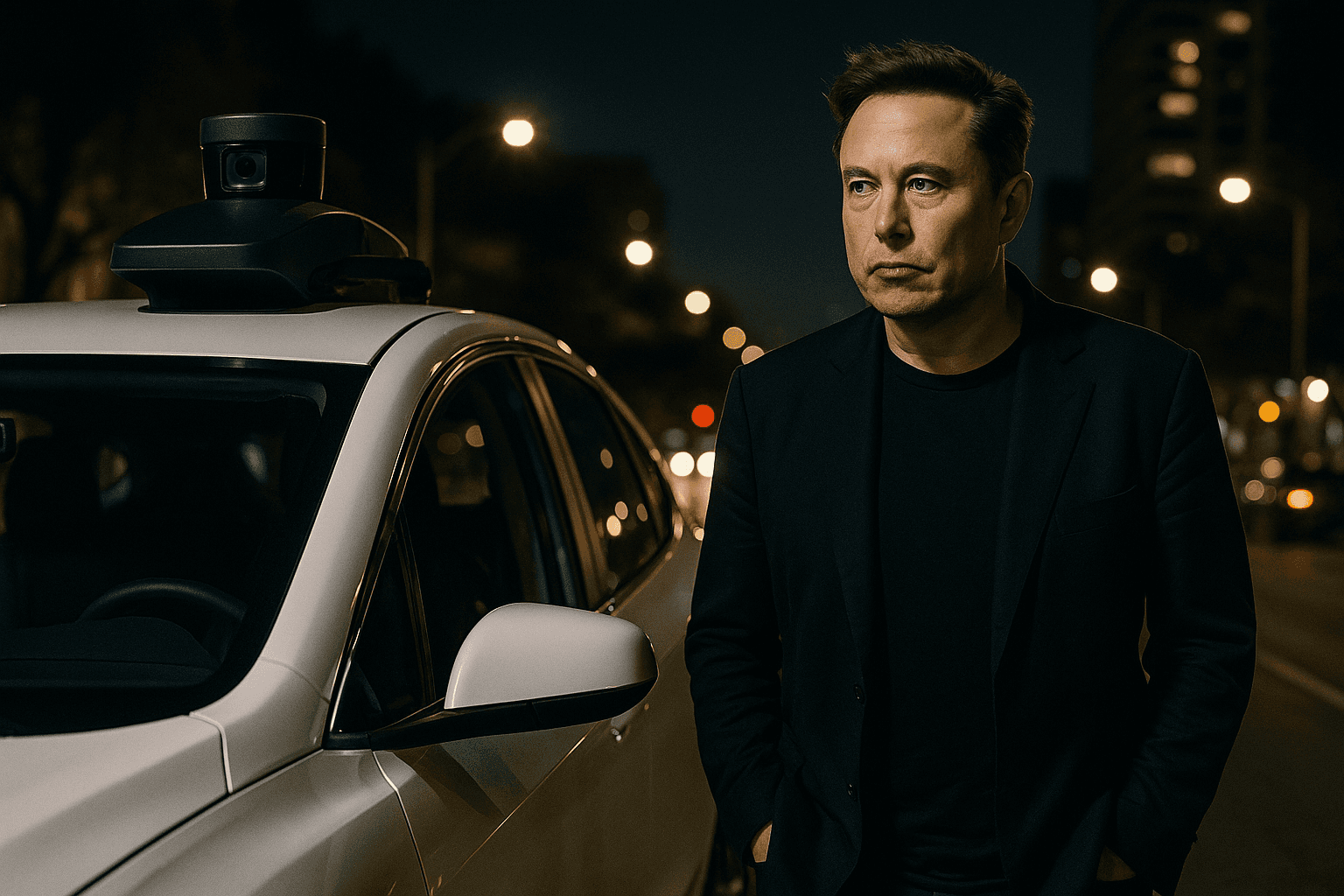Elon Musk Says Austin Robotaxi Fleet Will Roughly Double
Tesla Chief Executive Elon Musk posted that the number of robotaxis operating in Austin should "roughly double" in December, signaling a sharp near term expansion for the company’s self driving ride hailing service. The comment comes as Tesla operates fleets in Austin and the San Francisco Bay Area, still uses safety monitors, and pursues broader national permits that could reshape urban transportation and regulatory debates.

Elon Musk announced on X that Tesla’s robotaxi fleet in Austin, Texas, should "roughly double" in December, a public confirmation of rapid scaling for a service that the company first rolled out in the city in June. The growth will increase Tesla’s on street presence as the company continues to operate its autonomous ride hailing service in two U.S. metropolitan areas, Austin and the San Francisco Bay Area, while still requiring safety monitors inside the vehicles.
Tesla’s expansion plan comes amid an intensifying race among technology and automotive firms to commercialize autonomous ride hailing. After years of missed timelines and the collapse of several startups, the sector has regained momentum as established players including Alphabet’s Waymo and Amazon owned Zoox broaden pilot programs and paid services. Tesla’s move to enlarge the Austin fleet and its recent permit to operate a ride hailing service in Arizona are concrete milestones in that resurgence.
The decision to scale up Austin operations while retaining in vehicle safety monitors highlights the dual pressures Tesla faces, technological and regulatory. Musk has previously said he expected robotaxis to operate without safety drivers in much of Austin by the end of 2025, and to expand into eight to ten metropolitan areas by year end. Those ambitions intersect with public safety concerns, evolving state and local rules, and the patchwork of federal oversight that governs vehicle testing and commercial services.
Operators expanding robotaxi fleets will confront practical questions about reliability, rider acceptance, and the systems that intervene when automated systems encounter novel road conditions. For regulators the immediate issue is whether increased exposure of these vehicles to real world traffic will produce the safety data necessary to assess claims of superiority over human drivers. For city planners and transit officials the expansion raises questions about congestion, curb access, and the relationship between autonomous services and public transit networks.

The business implications are also significant. Enlarging a live fleet can accelerate learning by exposing autonomous software to diverse scenarios, potentially improving performance faster than closed track testing. That dynamic is attractive to investors and to cities hoping for reduced traffic deaths and enhanced mobility. Yet it also amplifies reputational risk, since any high profile incidents will occur on a larger scale and in full view of the public.
Tesla’s simultaneous push in Arizona and its continuing operations in California reflect a strategy of rapid market entry. How regulators in those states respond in coming weeks and months could determine whether the company can meet Musk’s broader timeline for driverless operation across multiple cities. The growing number of real world deployments by competing firms will shape best practices and could hasten the creation of standards for safety monitors, data sharing, and operational transparency.
As Tesla increases the number of robotaxis on Austin streets, the experiment that began in June will enter a new phase. The results will be closely watched by regulators, competitors, and the public as the balance between innovation and oversight is tested in one of the most consequential shifts in urban mobility in decades.


